#animal camouflage
Text
The Camouflaged Looper: these caterpillars fashion their own camouflage by collecting flower petals/vegetation and using silk to "glue" the pieces onto their bodies
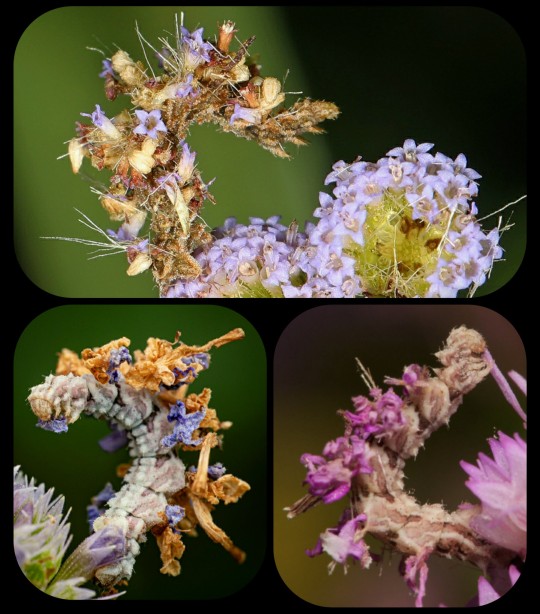
Though they're often referred to as "camouflaged loopers," these caterpillars are the larvae of the wavy-lined emerald moth (Synchlora aerata).
Camouflaged loopers deploy a unique form of self-defense -- they snip off tiny pieces of the flowers upon which they feed, then use bits of silk to attach the vegetation to their backs. This provides them with a kind of camouflage, enabling them to blend in with the plants that they eat.

Some of them create little tufts that run along their backs, while others fashion a thicker camouflage that covers their backs completely. In some cases, the camouflaged loopers will even build much larger bundles that surround their entire bodies.
Their range includes most of North America (from southern Canada down through Texas) and they can feed upon an enormous variety of plants -- so the disguises that these caterpillars build can come in countless colors, shapes, and sizes, incorporating many different flowers and other bits of vegetation.

And this is what the fully-developed moth looks like:
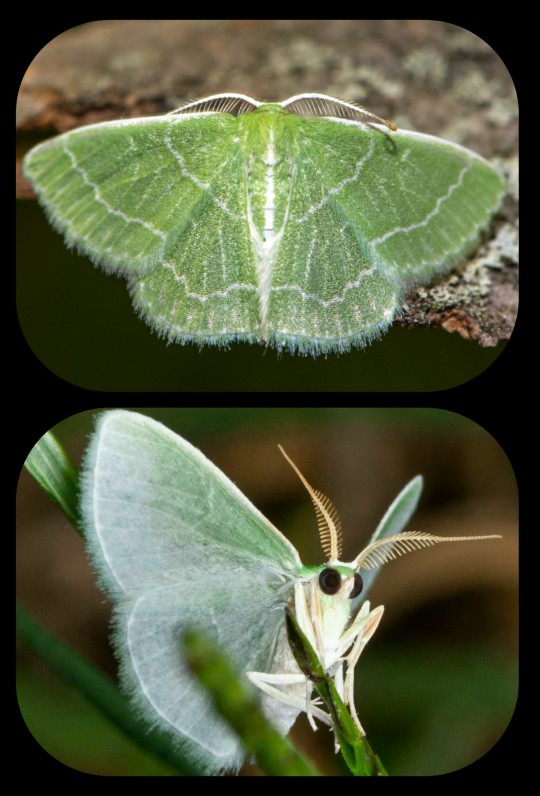
Sources & More Info:
Loudoun Wildlife Conservancy: Wavy-Lined Emerald, Master of Disguise
Maryland Biodiversity Project: Wavy-Lined Emerald Moth (Synchlora aerata)
The Caterpillar Lab: Camouflaged Looper
University of Alberta Museums: Synchlora aerata
Missouri Department of Conservation: Wavy-Lined Emerald
Nebraskaland Magazine: The Amazing Camouflaged Looper
Lake County Forest Preserves: Camouflage Revealed
#lepidoptera#moths#insects#caterpillar#camouflaged looper#animal camouflage#cute bugs#tw bugs#fashion#nature is weird#animal facts#these literal larvae have better fashion sense than I do
7K notes
·
View notes
Text

674 notes
·
View notes
Text


This cabbage looper moth (Trichoplusia ni) blends so well with the trunk of my wisteria that you can hardly see it in the top photo. Now look at the bottom photo. Aha! There it is.
32 notes
·
View notes
Text
The biology teacher talked about camouflage and mimicry in animals yesterday.
I’m interested.
There are different types of camouflage. Mimicry is one of them. This is when an animal looks like another animals or something gross. Mimicry sometimes also is when an animal sounds like something else. For example, there is a moth that mimics the sound of a tiger moth because those are not really tasty.
You also have examples of moths that look like a broken twig, a caterpillar pretending to be a venomous snake and a butterfly looking like a leaf. Maybe you see a pattern here. It’s a lot of butterflies and moths. Other insects do it too! For example hover flies and stick bugs mantises. And we all know those smaller wasps, right? Well, those are the, completely harmless, hover flies! They use this to not get attacked by humans.
Octopi also use camouflage! (Only one species though, this species is called the mimicry octopus)When they swim over the ocean ground they let their tentacles free after them too look like some kind of flat fish. When they’re swimming normally/up the octopi also let their tentacles go free. They do this to look like a lion fish. When the octopi are resting or sleeping they bury themself under the sand. The octopi let their two of their tentacles go free to make it seem like a very venomous snake.
The hawk-moth caterpillars also ‘use’ batesian mimicry. They have adapted themselves to look like highly venomous snakes. They do this because well, they’re caterpillars- they’re quite big too.
The mimicry of octopi and other creatures looking like dangerous animals is called batesian mimicry.
There is also acoustic mimicry. This is when animals sound like another animal. I’ve talked about one moth sounding like another (tiger) moth, right? Well, other animals do this too.
Several species of spiders mimic ants. Though this is not as handy as you might think. They have a smaller waist and therefor can carry less egg sacs. They don’t reproduce as much as other spiders do.
Then we have Emsleyan mimicry. This is when a dangerous animal mimics a less or non dangerous animal. I actually cannot find or understand the explanation to this. So I apologise for that.
Now we’re going to my favourite type of mimicry. Aggressive mimicry. This is the wolf’s in sheep’s clothing approach where an animal looks like prey or has a limb that looks like prey.
Two of my favourite examples here are the alligator snapping turtle and the spider-tailed horned viper.
The alligator snapping turtle will hang out underwater and open it’s mouth. Snapping turtles have a tongue that they can move to represent a worm. The snapping turtles will just wait, unmovingly, for an animal to be stupid enough to try and eat the ‘worm’ in the mouth of the snapping turtle.
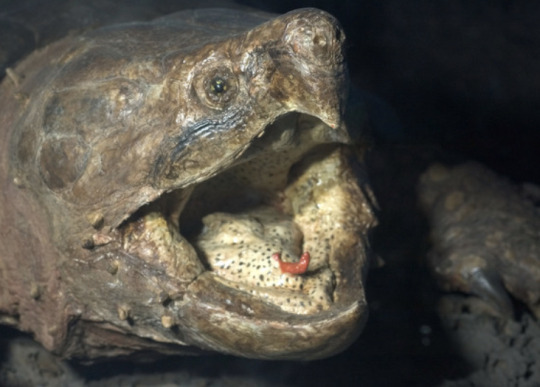
No thank you.
Now, onto the spider-tail horned viper. This snack or viper has a weird looking tail. The snake itself will hide/camouflage with some rocks and move its tail to mimic a moving spider. The first time I saw a video I was convinced it was a spider, till I saw something fly to it to try and eat the spider and I saw a snake jump out of there to grab it.
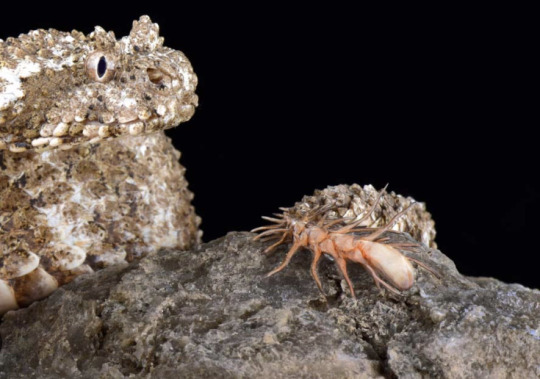
Unbelievable, right?
I already talked about how mantises can look like ants, right? (If not, they can)
There are mantises that look like flowers. Let’s take the orchid mantis as example for this. They use this as hunting camouflage. They climb up an orchid and sit next to the flower to then wait for a prey to come. It’s really cool and they are also very beautiful.
They of course are also different mantises. Some look like leafs and also dead leafs.
And that is all for now! Have a good day!
#animal facts#fun facts#fun facts with idi#mantises#camouflage#agressive camouflage#animal camouflage#snakes#turtles#spiders
22 notes
·
View notes
Video
Sand Bear Spider (Arctosa perita) 1 of 3 by Will Atkins
Via Flickr:
another example of wonderful camouflage from the animal kingdom, this spider blends perfectly with the sand grains on heaths and dunes across Europe. A smaller relative of the impressive Northern Bear Spider (Arctosa cinerea).
#Sand Bear Spider#Arctosa#Arctosa perita#Lycosid#Lycosids#Lycosidae#wolf spider#Wolf Spiders#animal#animal camouflage#camouflage#Wildlife#Wildlife of Europe#European Wildlife#Nature#Arachnids#Arachnid#Arachnids of Europe#European spiders#Spider#Spiders#Spiders of Europe#spiders of Britain#British Wildlife#British spiders#British Arachnids#UK wildlife#UK spiders#UK Arachnids#Dorset wildlife
0 notes
Text
Incredible Owl Camouflage on Display
We love the ability for animals to blend into their surrounding. When you think of camouflage in the animal world, owls might not be top of mind.
But indeed owls are masters of blending into their surroundings, waiting for their prey to be in range of a strike. They wait patiently, using their impressive vision to spot their target. They can then swoop down silently on their prey, utilizing…
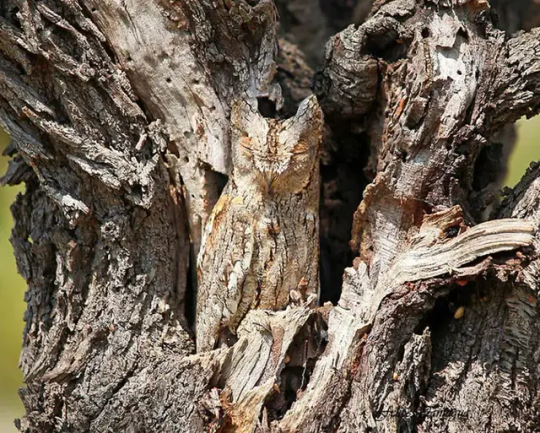
View On WordPress
0 notes
Photo
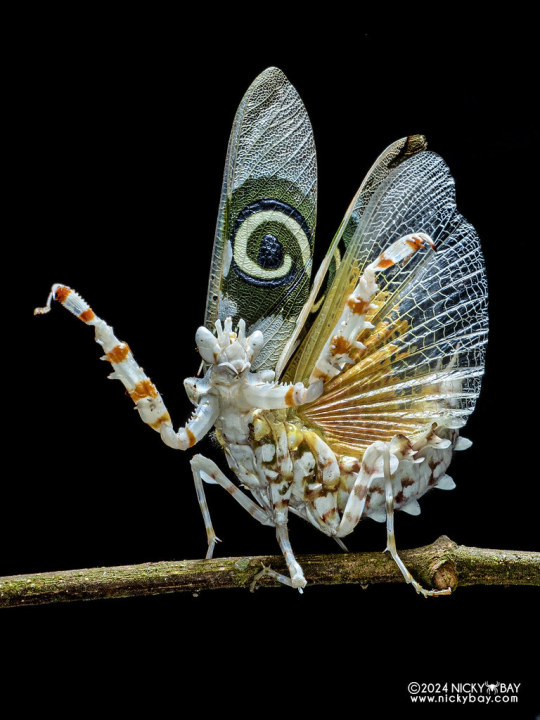

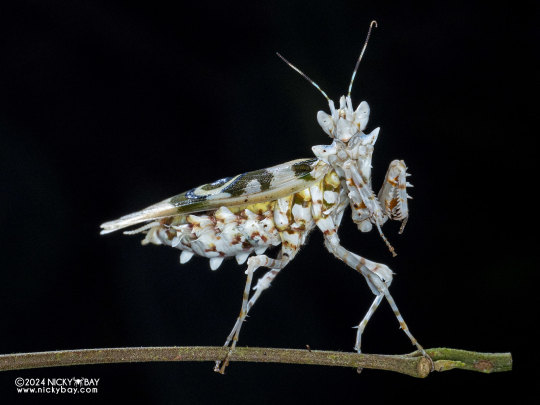


Spiny flower mantis (captive pet), Pseudocreobotra wahlbergi
Photo by Nicky Bay // Website // Facebook
Shared with permission; do not remove credit or re-post!
3K notes
·
View notes
Text
Creature Awaits #197
Each week I plan to feature an amazing creature, admiring God's fantastic artistry. Hopefully it’ll brighten someone’s day to see something new and interesting if they haven’t seen it before. : )
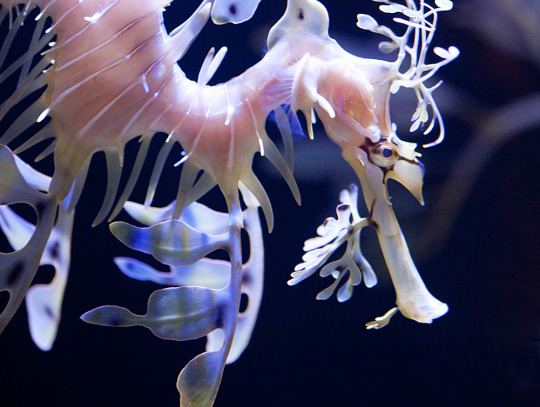

(Stunning photographs taken by the talented, Nathan Rupert (CC BY-NC-ND 2.0 (cropped for format)))
The Leafy Seadragon
A.K.A: Glauert's Seadragon
Scientific Name: Phycodurus eques
Region: Along Australia's southern coast
Size: Roughly 8"-9 1/2" (~20cm-24cm) long
Interesting Notes: In addition to its obvious seaweed-mimicking appendages, this beautiful seadragon can also shift its color to blend in even more seamlessly; however, this ability can be hampered by its current diet, age and level of stress.
#creatureawaits#Leafy Seadragon#Glauert's Seadragon#Phycodurus eques#Australian wildlife#fantastical creatures#beautiful animals#bizarrely beautiful#mesmerizing#animal camouflage
1 note
·
View note
Text

Just in case you need cheering up, here's a lappet moth. Pls enjoy its delightful snout & excellent leaf camo. A+ soft and fuzzy moth friend 💖
Thank you from the Moth Promotional Board ✨🦋🐈✨
#moth#moths#lepidoptera#insect#insects#nature#entomology#cute animals#bugblr#bug#bugs#cute bugs#cool bugs#pretty moth#moth trap#moth trapping#camouflage#cryptid#crypsis#mimicry#a beautiful friend#cw bugs#cw insects
879 notes
·
View notes
Text

Meet the Caribbean reef octopus (Octopus briareus)! This reef-inhabiting cephalopod lives in warm shallow waters, spanning southern Florida to the Caribbean, through to South America’s northern coast. It’s distinguished by its eye-catching blue coloring, but this master of disguise can change its looks in an instant. Like other octopuses, it uses pigmented cells in its skin, called chromatophores, to alter its appearance. When confronted by a foe, such as a shark, it may emit a cloud of unpleasant-tasting ink to deter its enemy from further pursuit.
Photo: francoislibert, CC BY-NC-SA 4.0, iNaturalist
#science#natural history#nature#animals#ocean life#octopus#fish#sea creatures#coral reef#did you know#fact of the day#animal facts#marine biology#cool animals#camouflage
859 notes
·
View notes
Text
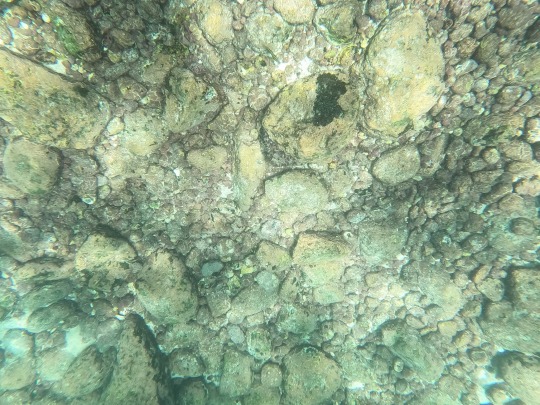
Took this photo of an octopus on the sea floor and I am blown away how insanely effective this animal’s camouflage is here
6K notes
·
View notes
Note
frogs are my sister's favorite animal, any frogs I should show her?
Might I suggest Frogs With Snoots®
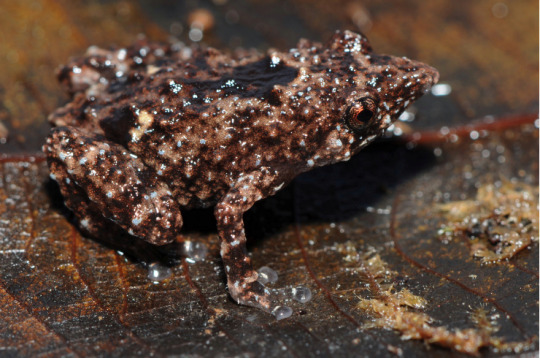
Choerophryne proboscidea [src]
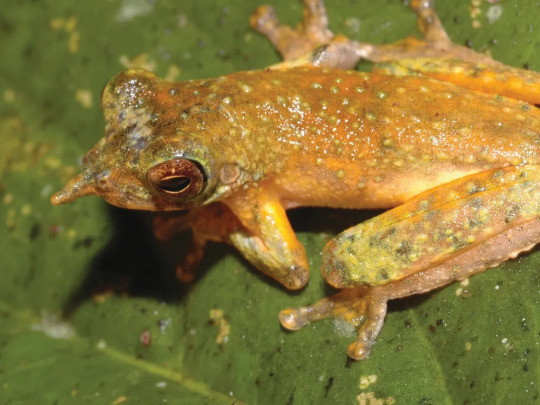
Litoria pinocchio [src]
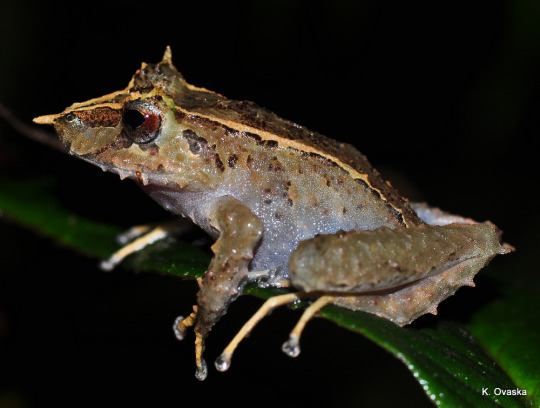
Pristimantis appendiculatus [src]

Litoria mucro [src]
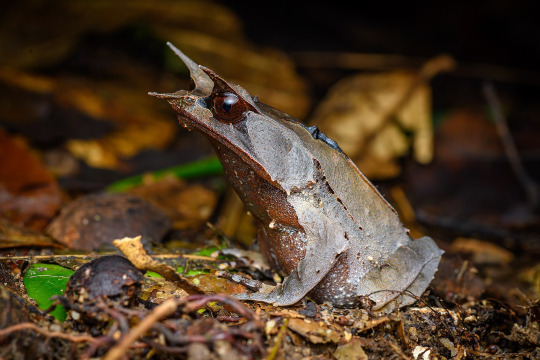
Megophrys nasuta [src]
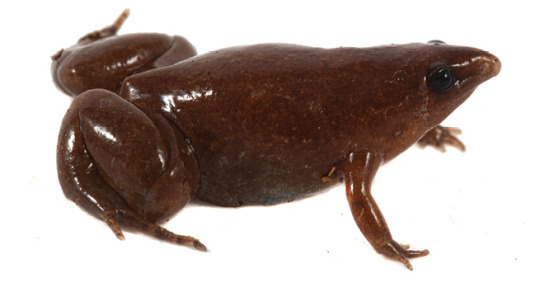
Synapturanus danta [src]

Scinax garbei [src]
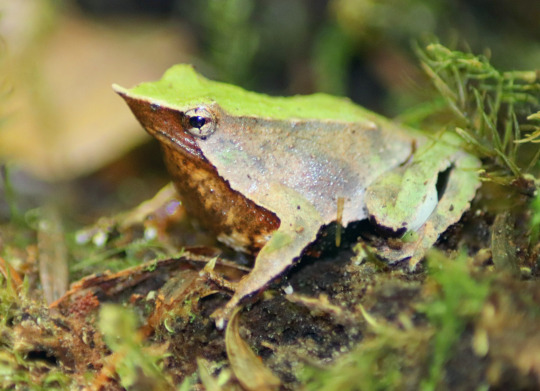
Rhinoderma darwinii [src]

Hemisus marmoratus [src]

Nasikabatrachus sahyadrensis [src]

Rhinella lilyrodriguezae [src]

Triprion petasatus [src]

Hemiphractus proboscideus [src]
Need I go on?
#frogs#frog#snoot#snoots#animals#zoology#biology#wildlife#nature#Big Nose Energy#science#what is the snoot even FOR#like#so many different frogs have evolved snoots#some have clearly done so for defense#and some for digging#but the rest?#what a weird form of camouflage#gosh frogs are so cool#I think very few people#even among professional batrachologists#have a comprehensive overview of just how diverse frogs are#always stunning how often the same kinds of traits have evolved independently#it's like there's a pre-existing set of frog pieces that you can Build a Frog out of#and very few have Shiny Unique pieces#although some have unique combo bonus +2#hold the phone that is a good idea for a paper right there#please nobody steal that
1K notes
·
View notes
Text




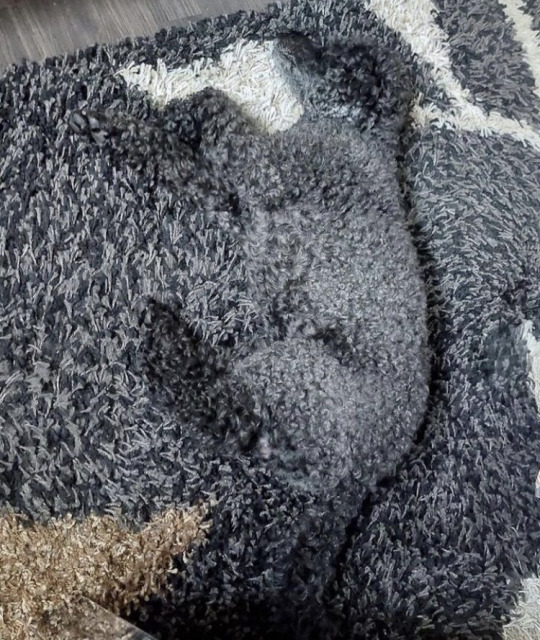




accidental camouflage, x
#which one did u have the hardest time with?#nr 6 is a tricky one for sure#nr 7 (bottom left) threw me for a loop!#lol it took me ages#cottagecore#animals#accidental camouflage#cats#dogs#mice#funny#cute#nature#naturecore
2K notes
·
View notes
Text

sold
well camouflaged
174 notes
·
View notes
Photo
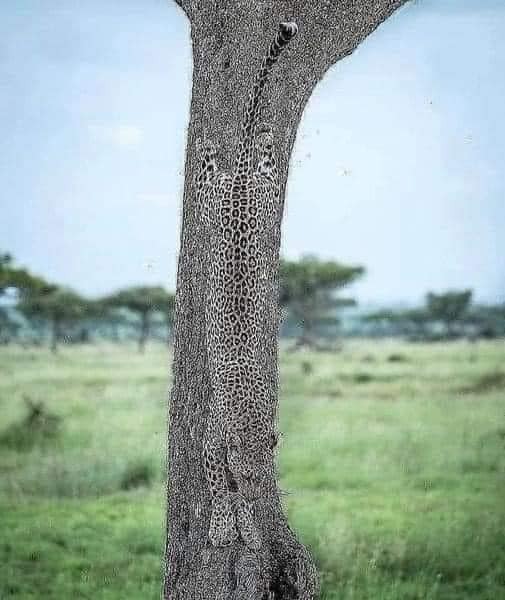
Perfect camouflage.
3K notes
·
View notes
Text
The Master Camouflage of the Dead Leaf Butterfly
The magic of animal camouflage always impresses us, from color-shifting octopus to the perfect owl hiding in its tree hole. We’ve recently come across the dead leaf butterfly, which lives in tropical Asia, from India to Japan.
It has an astounding camouflage that makes its outward appearance look exactly like that of a dead leaf, complete with worn looking veins, torn edges and…

View On WordPress
1 note
·
View note
